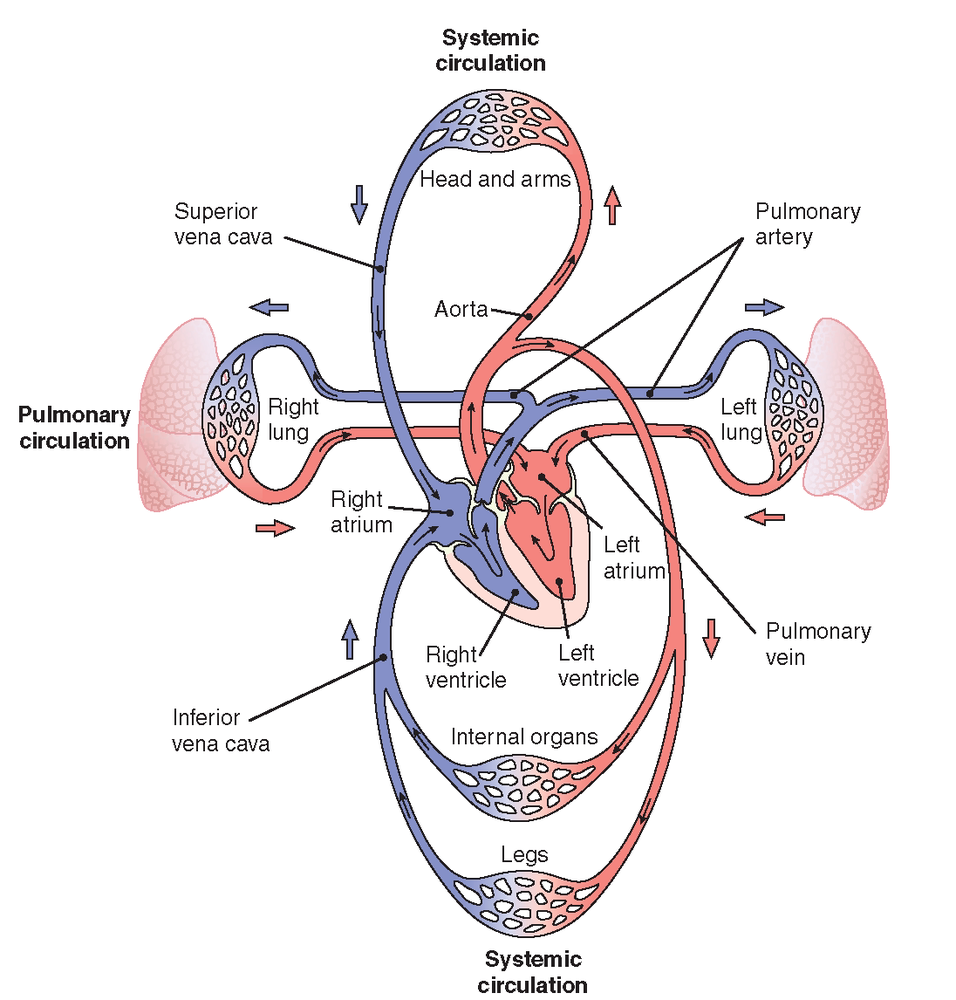The heart, situated between the lungs, is perhaps one of the most important muscles in your body, as it is responsible for pumping oxygenated blood around the body. This vital process of blood circulation is achieved via systemic circulation and pulmonary circulation. So, what is the difference between pulmonary circulation and systemic circulation? Continue reading to find out.
What Is the Difference Between Pulmonary Circulation and Systemic Circulation?
Your heart pumps blood around the body via two different classifications of blood circulation - pulmonary circulation, carrying deoxygenated blood to lungs and systemic circulation, carrying oxygen-rich blood to all oxygen-needed cells. Each type of system plays a different role in the overall process of circulation. The differences between them are listed below:
1. Where the Blood Goes
The main difference between the two circulatory systems is the destination of the blood that's  being circulated. Pulmonary circulation carries blood to and from the oxygen-exchange surfaces within a person's lungs. Systemic circulation runs to and from the cells in your body.
being circulated. Pulmonary circulation carries blood to and from the oxygen-exchange surfaces within a person's lungs. Systemic circulation runs to and from the cells in your body.
2. Rich in Oxygen or Not
If the blood is rich in oxygen, then it does not require oxygenation. This oxygen rich blood passes through the heart, enters the systemic circulatory system and travels around the body to send oxygen to your cells.
After this, the blood becomes deoxygenated, returns to the heart and enters into the pulmonary circulatory system. Then it travels to the lungs and once again becomes enriched with oxygen.
3. The Chambers of Heart It Connects
Another very important answer to "What is the difference between pulmonary circulation and systemic circulation?" is that the chamber they connect is different. The heart is made up of four chambers that form two sides, each having a different role in circulation. The right side of the heart consists of two chambers known as the right atrium and the right ventricle. Deoxygenated blood from the body goes to the right atrium and then is sent to the lungs via the right ventricle and pulmonary circulation, while oxygenated blood from the lungs goes to the left atrium and then is pumped around the body through the left ventricle, as the blood enters systemic circulation.
4. Development
The development of the circulatory system begins in the embryo as vasculogenesis. Although, fetal circulation does not include the lungs, the fetus gains all essential nutrients and oxygen from its mother's placenta and umbilical cord. In fetal circulatory development, pulmonary circulation is bypassed and blood travels directly from the right atrium to the left atrium via the foramen ovale. At birth, the lungs (which were collapsed) expand and blood is taken from the right atrium into the right ventricle and pulmonary circulation begins. Fetal circulation usually begins within the eighth week of development.
5. Discovery
The earliest writings on the circulatory system known to man are found in an ancient Egyptian medical papyrus, the Ebers Papyrus (16th Century BC). Pulmonary circulation was first noted in 1242 by Ibn al-Nafis, in his writings on Anatomy in Avicenna’s Canon. It was also described in the unpublished work of Michael Servetus around 1546, and again in 1553, in his published work Christianismi Restitutio. The systemic circulation was proposed by William Harvey in his published book Exercitatio Anatomica de Motu Cordis et Sanguinis in Animalibus in 1628.
